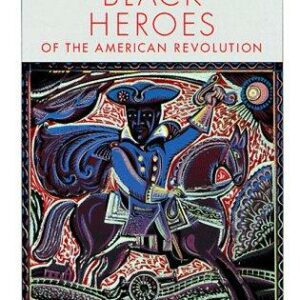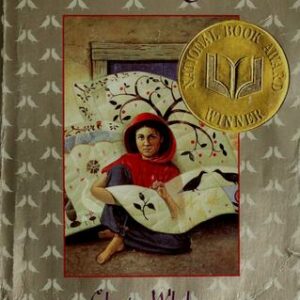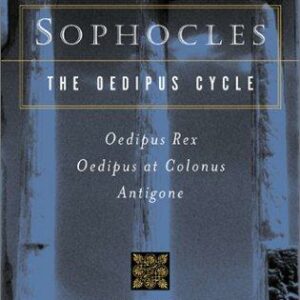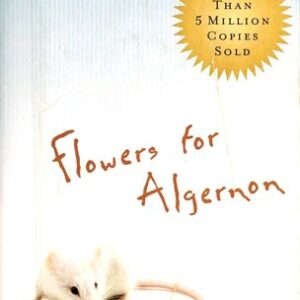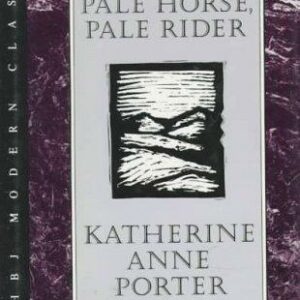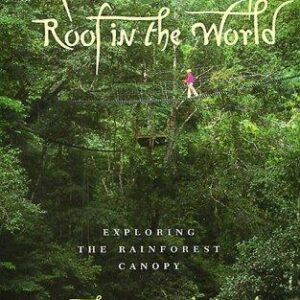Nine Quarters of Jerusalem
$27.99
| Title | Range | Discount |
|---|---|---|
| Trade Discount | 5 + | 25% |
- Description
- Additional information
Description
This unique, absorbing biography of Jerusalem brings to light its overlooked histories and diverse contemporary voices.In Jerusalem, what you see and what is true are two different things. The Old City has never had “four quarters” as its maps proclaim. And beyond the crush and frenzy of its major religious sites, many of its quarters are little known to visitors, its people ignored and their stories untold. Nine Quarters of Jerusalem lets the communities of the Old City speak for themselves. Ranging from ancient past to political present, it evokes the city’s depth and cultural diversity.
Matthew Teller’s highly original “biography” features the Old City’s Palestinian and Jewish communities, but also spotlights its Indian and African populations, its Greek and Armenian and Syriac cultures, its downtrodden Dom Gypsy families, and its Sufi mystics. It discusses the sources of Jerusalem’s holiness and the ideas—often startlingly secular—that have shaped lives within its walls. It is an evocation of place through story, led by the voices of Jerusalemites. “[Teller’s] highly perceptive and readable book…combines millennia of Jerusalem’s history with insightful interviews with its residents…a subtle portrait of the current reality at the heart of the world’s most intractable and divisive conflict.” —The Observer
“[An] engaging biography…Teller is an informed, enthusiastic guide.” —Financial Times
“A love letter to the people of the Old City…Teller’s book [is] a rare treasure.” —Jerusalem Post
“A deft, engaging portrait of a teeming, shape-shifting city.” —Kirkus Reviews “Teller excels in piecing together the old and the new, religion and politics, money and family, combining academic research with powerful human stories. In his colorful style, he brings the city and its occupants to life, taking readers on a breathtaking journey…a remarkable book.” —Arab News
“An original and engaging take on the city…packed with fascinating material.” —Tel Aviv Review of Books“Evokes the sights, smells, and flavors of ‘Old’ Jerusalem effectively…[Teller] is an enchanting but angry storyteller; angry about the injustices and inequities experienced in the city over centuries…an engrossing travelogue.” —Catholic Herald “This telling of history spotlights the characters, communities, and institutions that have given the Old City a heartbeat underneath all the grandeur and mythology…Teller’s stories are informed by dogged detective work.” —Middle East Eye
“Teller is a travel writer by background and it shows in his descriptions of Jerusalem…seemingly little things are what makes this book stand out.” —Asian Review of Books“The Old City of Jerusalem has found an inspired, imaginative, and iconoclastic biographer. Teller set himself the modest task of telling stories. The end result, however, is a highly readable book, a vivid portrait, and a fresh perspective on this infinitely complex city.” —Avi Shlaim, Emeritus Professor at the University of Oxford and author of The Iron Wall: Israel and the Arab World“This book peels away the layers of deception to debunk the myth that the Old City is composed of four distinct quarters—a notion that continues to plague the city and underpins the assumption that present-day conflict comes down to age-old hatred between religions…Teller takes the reader on a trip that reveals the Old City of Jerusalem better than any other book written about the city.” —Raja Shehadeh, author of Palestinian Walks: Forays into a Vanishing Landscape
“Original and illuminating…what a good book this is.” —Jonathan Dimbleby, author of Operation Barbarossa: The History of a Cataclysm
“Captivating. Teller’s language flows lightly but his feelings run deep, and it is difficult to pull away from his descriptions of the Old City.” —Noga Tarnopolsky, Jerusalem reporter, Los Angeles Times
“For any other city, a book that tells the stories of its residents might be unremarkable—but for Jerusalem, so often weighed down by ancient history and the politics of occupation, Teller has produced a book that is borderline radical in its focus on the people who live there.” —Zora O’Neill, author of All Strangers Are Kin: Adventures in Arabic and the Arab World
“Exploding the myths about age-old hatreds between religions, this must-read book lays bare the role of arrogant British colonialists and missionaries in shaping Jerusalem’s Old City according to their vision. It challenges the misleading maps that serve the Israeli narrative and encourages visitors to see beyond the facade. A must-read exposé.” —Diana Darke, author of Stealing from the Saracens: How Islamic Architecture Shaped Europe
“A marvel. Teller deftly braids the historical, the political, and the experiential. His book is at once universal in scope and intimate.” —Massoud Hayoun, author of When We Were Arabs: A Jewish Family’s Forgotten History
“A lyrical and electric book, rich and intensely evocative (with a twist of cumin), as the author shares his lifelong obsession for one of the most over-documented and misunderstood cities on earth. This is not another biography but an altogether more important book, about the human tapestries that could, possibly, weave together a new Jerusalem.” —Louisa Waugh, author of Meet Me in Gaza: Uncommon Stories of Life Inside the Strip
“There has been no book like this written in the last twenty years…Matthew Teller has resurrected this city.” —George Hintlian, author of History of the Armenians in the Holy Land
“In this riveting book, Matthew Teller establishes himself early as a trustworthy and insightful interpreter of Jerusalem’s millennia of history and a keen observer of today’s vibrant city. Every chapter of Nine Quarters of Jerusalem makes surprising connections between seemingly unaffiliated events, people, and places. Teller presents a palimpsestic history that interweaves interviews and conversations with locals, the author’s own photographs, documents, maps—even birdsong—with astonishing sensitivity. He invites readers to approach the city with all of their senses, seeing Jerusalem stone on all the buildings, smelling food and incense in the marketplaces, hearing pilgrims sing along the Via Dolorosa, placing our hands on piles of cloth in a tailor’s shop, and tasting bitter coffee and sweet pastries. You’ll come away with a sense of the holy as a decidedly human phenomenon, best observed up close and scaled to our own conceptions of history and time. A powerful book!” —Kristina Richardson, author of Roma in the Medieval Islamic World: Literacy, Culture, and Migration
“Looking at the world as it is, once you get below the surface, will always be an exploration of complexity, nuance, history, and individual experience. Matthew Teller takes us deep into Jerusalem as it is today, which inevitably means looking at it as it was decades, centuries, and millennia ago. How we see Jerusalem today is invisibly, but unavoidably, entwined with how people in the past and present want it to be seen, and lived in, and Teller gives us ways to make sense of the kaleidoscopic turns of history and the life experiences of people who call Jerusalem home.” —Shannon McMaster, Schuler Books, Grand Rapids, MI Matthew Teller writes for the BBC, The Guardian, Times of London, Financial Times, and other global media. He has produced and presented documentaries for BBC Radio and has reported for the BBC’s From Our Own Correspondent program from around the Middle East and beyond. He is the author of several travel guides, including the Rough Guide to Jordan. His most recent book is Quite Alone: Journalism from the Middle East 2008–2019. City of Icebergs
An Introduction To Jerusalem
We all have our Jerusalem. Our place of heavenly perfection, our city of joy. The culmination of our hopes and embodiment of our dreams. A true home, where we will live in communion with humanity and the higher powers in the comfort of certainty and the certainty of comfort.
Just please don’t get your Jerusalem mixed up with the real one.
Because the real one’s in a bit of a state right now.
“I don’t see Jerusalem as holy at all. What even is holy? You feel the Old City is the most pressured city in the whole world. Behind that wall you see so many aggressive, tense people. It’s supposed to be this holy city, city of love and sharing, but honestly, I don’t see it.” That’s what a Jerusalemite friend, Amoun Sleem, told me, when I asked her what it meant to live in a holy city. But then she added: “I’m connected with the Old City beyond politics and what people feel. I can’t change that. I love it.” And she wrote as much in her memoir: “Nothing is more beautiful than my home, Jerusalem. My morning walk in the Old City has a beautiful magic.”
You find this a lot in Jerusalem, this push and pull, hot and cold. It’s a prerogative of ownership, of belonging – to criticize, disparage, even to hate, but at the same time to love. I’ve had a friend tell me he knows the Jerusalem stories he grew up with are fiction, but still he would die to defend the stones that bred them. That’s only a part of what makes this city so hard to understand. Inevitably, too, there’s a gap between how a person might live their city each day, and how they might communicate that experience to peers and insiders, let alone to outsiders like me.
Here is John Tleel, Jerusalemite author, who died in 2018:
Only by living inside the Old City, enclosed by its walls, can you really come to know Jerusalem. Along its narrow streets you begin to feel its force. You are changed by its shrines and holy places, you are baptised by the city of stone. But it is not easy to be a Jerusalemite. A thorny path runs alongside its joys. The great are small inside the Old City.
You don’t know how to treat Jerusalem. Most people treat Jerusalem as a city. It is not a city. It’s not London, it’s not New York, it’s not Paris. This is a person, Jerusalem is a living person. It breathes, it talks, it fights. It is not a city. Every minute in Jerusalem is a special minute. It is something that gives you a new life. You become a new person, every minute.
Ten thousand metaphors have grasped at Jerusalem. Layers of an onion is a popular image, not least since it evokes the layers of history diggable beneath every street. Mustafa Abu Sway, professor of Islamic studies, told me the benefit of living here was “like having the right plug. It lets you plug directly into the energy source.” And I’m fond of what another friend, the writer Yuval Ben-Ami, said. He called Jerusalem “the city of the frozen moment.” That encapsulates nicely the idea that everything you see is just a snapshot. Each tiny cross of the hundreds carved into the stone walls of the Church of the Holy Sepulchre speaks of the life of a single pilgrim, in the moment of their arrival at their destination. And if, as long suspected, the tiny crosses date from the Crusader era (recent research suggests they may be earlier), then they also speak of the moment of conquest, frozen in stone by the sword hand of a pilgrim-knight. Another example. The dome of the Dome of the Rock wasn’t always gold. From 1022 to 1959 – some 937 years – it was dark gray lead. Then it was renovated with sheets of anodized aluminium that looked golden, before in 1993 being re-covered in copper panels plated with a two-micron layer of actual gold. Over the last few decades, a blip in time, our image-saturated era has elevated the golden dome to be the emblem of Jerusalem. The golden dome, so often pictured against a sky of penetrating blue, means Jerusalem. It asserts the reality of Islamic Jerusalem. It even stands, gloriously, for Islam itself. It’s inconceivable, now, that it was ever gray, or could ever return to gray. The golden dome is another frozen moment, a function of the building’s late twentieth-/early twenty-first-century role at the nexus of religion and geopolitics.
So the frozen moment idea is good. But it doesn’t go far enough. There’s something still more challenging playing below the surface. The core truth of Jerusalem today, it seems to me, is a jagged dislocation between appearance and reality. Whatever you see here is not what’s really going on.
All my life cumin has meant my first trip to Jerusalem. I can’t make an informed comparison – I was only a child, then – but I’d guess the city I saw in 1980 was very different from the city today. What I have in my mind’s eye from then is a scatter of impressions: flagstones worn smooth underfoot, gaudy colors and textures hung high over my head in narrow alleyways, my father doing something he wouldn’t dream of doing today: changing money at a Palestinian-owned booth inside Damascus Gate. And the smells. So many smells. Sweet things. Burnt things. Rotting things. Laundry soap. Hot bread. New leather. Smells I knew nothing about.
It was years later, at a time when spices had become a more normal thing for a suburban London family to buy and use, that I was able to put a name to the earthy scent I’d filed in my head for years as “Jerusalem.” So that’s what it was. Cumin. Then as now, cumin’s crimson-brown sniff of old warmth would plant me mentally in the middle of Jerusalem’s walled Old City, amid a crush of elbows on the crossroads of glittering, dizzying roofed pathways where the Souk al-Bazaar, or David Street market, turns left to Souk al-Lahameen, the Butchers’ Market, as multiple smaller markets crash in from both sides and the main alleyway doglegs downward to form Tariq Bab al-Silsila, the Road of the Gate of the Chain, on its way towards holy places. Everything was there, at that intersection: gold, fabrics, money, fresh bread, fresh fruit, fresh meat, leather, fenugreek, perfumes, heat, sweat, color, new faces, new languages, new people, new ways of being. I watched but I didn’t understand. I didn’t know how much I didn’t know. That was cumin.
For years I put cumin in everything. I was really putting Jerusalem in everything.
Jerusalem shouldn’t exist. I mean, there shouldn’t be a city there at all. That’s hard for us, who are not city-builders, to grasp, but in the era when Jerusalem began, if you were going to build somewhere to live, you wouldn’t choose that spot. Its water sources are too remote, down in steep valleys or far distant. Its hilltop ridges – which aren’t the highest around – are threateningly overlooked. Major trade routes pass nowhere near. Everything’s wrong. Yet, here it is. “Knowledge does not dispel mystery,” wrote Nan Shepherd.
When the pharaohs cursed “Rusalimum,” in texts written in the decades either side of 1900 bce, maybe they were cursing Jerusalem. We don’t know. But Jerusalem – perhaps named for Shalim, the god of the setting sun – was certainly a place by the time its ruler, Abdi-Heba, wrote to the Pharaoh Akhenaten, in the 1330s bce. Later, around 1000 bce, in a foundational tradition of Judaism, something special about Jerusalem prompted David, perhaps a ruler of Judah, a region to the south, to seize it and its fortress of Zion, then controlled by the Jebusites.
It seems the Jebusites – a nation or just a family; we don’t know – and all of Canaan, as the country was then known, may already have venerated Jerusalem as the center of the world. Spiritual energy could have been why they wanted to live here, despite the logistical shortcomings. Either way, when David’s son Solomon built a temple on one of Jerusalem’s stony summits, he probably incorporated pre-existing forms of Jebusite (that is, Canaanite) worship into his new, Israelite devotions. A rock at the peak of that summit, enclosed within the Temple buildings, became revered in Judaism – named after Judah – as the Foundation Stone, the interface between earth and heaven, source of creation and center of the world, beneath which raged the waters of the Flood. It was where God had collected the dust that formed Adam. It was where Abraham had bound his son, believed in Judaism to be Isaac, for sacrifice.
The Temple was destroyed in 586 bce, rebuilt and destroyed again in 70 ce. By then, the first Christians knew of Jewish traditions focused on the Rock, but for them, the foundational drama of faith in Jerusalem played out five hundred meters to the west, at a rocky knoll known as Golgotha (and, later, as Calvary). A kilometer to the east on the Mount of Olives, pilgrims venerated a rock bearing the footprint of Jesus from his ascent to heaven. Jerusalem remained the center of the world in Christianity but the Temple’s demolition twice over obviously demonstrated God’s displeasure with the Jews. Christ’s teachings signalled a transference of understanding, and a new beginning for humanity.
The first Muslims also knew of Jewish traditions, and Christian ones. Jerusalem was, to them, already a site of cosmic importance. It was where the prophets Abraham, David, Solomon and Jesus had lived and prayed. It was linked with Mecca by the Night Journey of the Prophet Muhammad. “There is not an inch in Jerusalem where a prophet has not prayed or an angel has not stood,” said Ibn Abbas, cousin of Muhammad. The Foundation Stone took on new significance: now it bore the footprint of Muhammad from his ascent to heaven, when he received God’s instruction to pray five times a day.
Below it gaped the Abyss of Chaos, source of the Rivers of Paradise. In Islam the Rock stood as the focus of the Quranic site Al-Aqsa, a mosque that some believed had been built by the first human, Adam, and renovated by Solomon. Over and around the Rock, Jerusalem’s new Muslim rulers designed an architectural evocation of the city’s crucial role as the location of the Day of Judgment – a building that was octagonal, like the Throne of God, with a golden dome beaming the message of Islam to the world. The esplanade around this new Dome of the Rock was where the souls of the dead would gather to hear the archangel Israfil blow the trumpet announcing the end of the world. Islam, in its turn, signalled a transference of understanding, and a new beginning for humanity.
As in the previous traditions, there was a physical Jerusalem and a moral, spiritual one; an old, corrupted message and a new, clear one. So it didn’t matter that the city had no river, no strategic value and no natural sources of commercial wealth. It had God.
I travelled once through Jordan with a friend from Vancouver who is blind. It was a revelation. He conceived of new places in an entirely fresh way. How do you convey the diversity of wildflowers on a rural hillside to a blind person? He tasted different kinds of local honey – one rich, one light, one floral-scented, one bland – and understood. How do you convey the longevity of occupation at an ancient archaeological site to a blind person? He walked on a spoil heap, hearing the centuries of discarded pottery crunch, fingering fine ware and coarse, and understood. How do you describe a city to a blind person? Helsinki had flummoxed him at first, he told me, because the streets were silent and odorless: he was forced indoors to understand. Amman in the open air, with its topographical echoes of traffic and music and languages, its smells of dust and cooking, its market thrum, its street food, rich with olive oil, he understood.
That journey left me convinced that the world we create through our eyes is only one world, and there are others. Is my impression of the rural hillside any more valid because I can see it? If we listen to a poem declaimed in an open-air theater, but my eyes work, does that mean my understanding of Roman society or architecture is better than my friend’s? Does seeing a market make the place more real?Eyes, truthfully, aren’t much help in Jerusalem. Whatever you’re looking at – this street, that building, these people, those weapons – you can’t know the truth of it from what you see. When racists want to attack strangers here, they (sometimes) ask them who they are first. Skin color and physical features give nothing away. Distinctive clothing aside – a hijab, say, or a kippah, or traditional garb such as kaftans or knickerbockers – you can’t tell by looking who is Israeli and who is Palestinian, who is Arab or Kurdish or Armenian, who is Muslim or Jewish or something else. What you see no more embodies truth than our face embodies our inner reality.
Sighted people cannot recreate the insights of blindness, but they can learn to take visual evidence with a pinch of salt – and I know no better place for that than Jerusalem, city of icebergs. What you see here is only ever the 10 percent above the surface, and if you attempt to navigate on the evidence of your eyes alone, you may find yourself holed beneath the waterline and sinking fast. US
Additional information
| Weight | 1 oz |
|---|---|
| Dimensions | 1 × 6 × 9 in |



